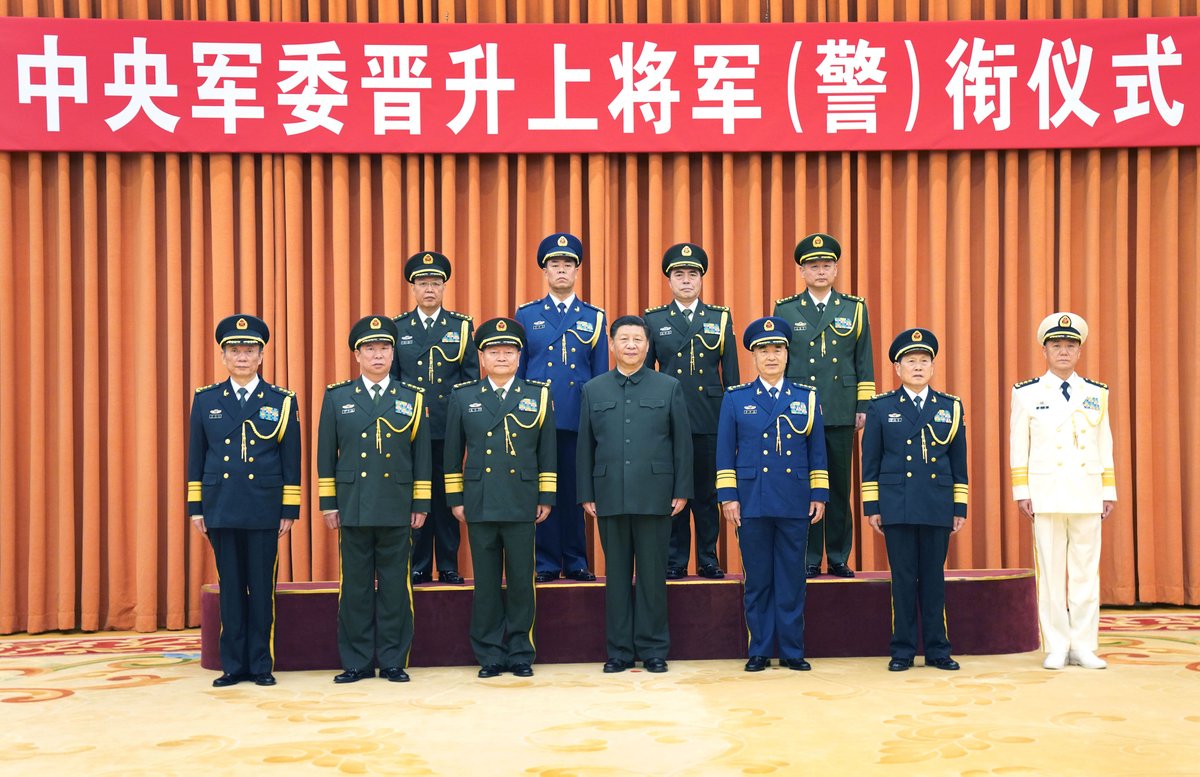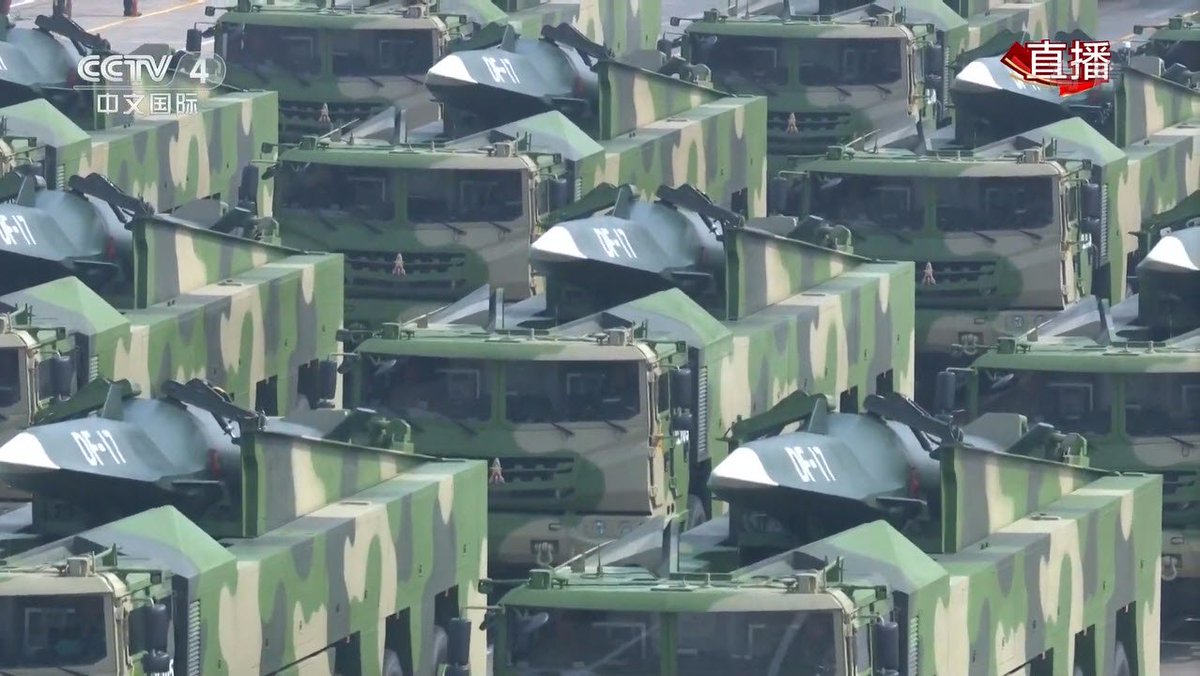China’s rapid acquisition of hi-tech weaponry as part of PLA’s modernization drive is not just aimed at asserting its military supremacy in Asia and beyond. It is also linked to a pressing domestic need – to infuse young blood into the armed forces.
It’s no longer a secret that President Xi Jinping has been pushing for modernization of the People’s Liberation Army (PLA) on a massive scale for several years now. Xi also wants to see PLA transforming into a major maritime power that can call the shots in the Asia-Pacific region, continue dominating Taiwan and the South China Sea.
China’s growing ambitions have raised concerns among world powers, with the US taking a very close look at the communist country’s military expansion. In April 2018, Xi attended China’s largest naval exercise involving 48 warships and 10,000 military personnel in the South China Sea.
“The task of building a powerful navy has never been as urgent as it is today,” Xi had said that day. And the communist country today boasts the largest navy in the world.
China’s 2021 defense budget, announced during the annual meeting of the National People’s Congress on March 5, amounts to $209.16 billion. Globally, China is the second-largest military spender, after the United States.

According to the Stockholm International Peace Research Institute (SIPRI), Beijing’s military spending shot up more than sevenfold, from $31 billion in 1998 to $239 billion in 2018. Even this year’s budget saw a 6.8 percent increase over the previous year.
Modernization Of China’s PLA
The Chinese Communist Party (CCP) had undertaken the modernization of PLA, an erstwhile communist guerrilla force, in two phases.
According to Lindsay Maizland, writing for Council on Foreign Relations, a US think tank, the first phase started in the 1990s when the US had flexed its military muscles during two global events – Gulf War and Taiwan crisis. It had dawned upon Beijing that it lacked the technology to fight a modern war.
Another turning point came in 2012 when Xi Jinping assumed power and outlined his vision to restore China’s great power status, as Maizland calls it. As the chairman of the Central Military Commission, he wants to transform the PLA into a truly world-class military by 2049.
The 2020 US Department of Defense report on China said that China is already ahead of the US in areas such as shipbuilding, land-based conventional ballistic and cruise missiles, and integrated air defense systems.
Focusing on China’s shipbuilding, the report said, China has the largest navy in the world, with an overall battle force of approximately 350 ships and submarines including over 130 major surface combatants. In comparison, the US Navy’s battle force is approximately 293 ships as of early 2020.
In terms of missiles, the PLA has more than 1,250 ground-launched ballistic missiles (GLBMs) and ground-launched cruise missiles (GLCMs) with ranges between 500 and 5,500 kilometers.
The US currently fields one type of conventional GLBM with a range of 70 to 300 kilometers and no GLCMs, according to the DoD report.
Apart from this, China has one of the world’s largest forces of advanced long-range surface-to-air systems—including Russian-built S-400s, S-300s, and domestically produced systems.
Russia Bets Big On S-500; But How Is S-500 Missile Defense System Better Than S-400s?
No wonder, the PLA Army & Air Force recently set up a combined air defense system somewhere close to the Indian border, as The EurAsian Times reported.
The two Asian neighbors – India and China have been engaged in a protracted border standoff in the Ladakh region. The two militaries had a bloody faceoff in Galwan Valley in June last year, resulting in the death of 24 soldiers in total, as per official figures released by both sides.
Advanced Weapons
China has been rapidly acquiring advanced weapons and high-tech equipment. The PLA, for instance, had received the Type 15 lightweight tank in 2018 for easy deployment in the high-altitude Tibetan region bordering India.
Among all the services, the PLA Navy has seen an unprecedented expansion. As many as 16 warships were commissioned in 2016 alone, compared to five by the US Navy, Maizland wrote.
Alarm Bells Ring In Beijing Over US’ Proposed Defense Budget Aimed At Countering China
Similarly, PLA Air Force and Rocket Force have acquired many pieces of highly advanced military hardware. Half of China’s combat aircraft are said to be truly modern. It has airborne warning and control systems, bombers, and drones, and the famous J-20 stealth fighter jets.
And it’s the PLA Rocket Force that possesses the ultimate weapons – the nukes. China is developing new intercontinental ballistic missiles (ICBMs) that will significantly improve its nuclear-capable missile forces, the DoD report said.
According to a 2019 research paper, the PLA Rocket Force has about 290 warheads that can be delivered by ballistic missiles and bombers.
Infusing Young Blood Into PLA
Some analysts argue that the PLA modernization program is part of the Chinese Communist Party’s (CCP) propaganda to entice the youth into joining the military.
Most Of US’ Global Military Deployment Is Shifting From Europe To Asia; What’s Driving The Change?
Already, a sizeable portion of PLA ranks has been filled by youngsters born after 1995. The CCP is trying to motivate more and more educated youth to take up the military as a career option and hence, the focus is on acquiring hi-tech weaponry that could strike a chord with the gadget-and gizmo-freak generation.
During a military parade in 2019 marking the 70 years of the People’s Republic, China had displayed the country’s most advanced weapons including ballistic missiles capable of hitting the US, advanced warplanes, and stealth drones.

Among them was the Dongfeng-17 (DF-17) ballistic missile system, which carries a hypersonic glide vehicle that’s “almost impossible” to intercept.
The J-20 ‘Mighty Dragon’ is a fifth-generation stealth fighter, which is said to be China’s answer to the US’ fifth-generation stealth duo – F-35 and F-22 Raptor. It can carry a variety of short and long-range weapons.
Then, it has the ‘Sharp Sword’ (GJ-11) stealth combat drone, capable of delivering weapons by a remotely located pilot and doing surveillance out at sea. There was speculation that the UCAV might be able to carry two 2,000-pound class munitions in internal bays and conduct long-range surveillance and combat missions.
Apart from these, China has been using its rapidly growing cyber warfare capabilities to draw the attention of young military enthusiasts. Over the years, Beijing has earned the wrath of many countries including the US, who see China as a global espionage hub.
Chinese tech and telecom giants like Huawei have been under Western scrutiny on alleged spying charges.
The fact that the Chinese PLA has a dedicated wing of cyber warriors has been in the public domain for more than a decade now.
Way back in 2019, an Indian expert had sounded a caution, saying, “a private army of young civilian hackers on whom the state can bank during crises is being developed for this purpose besides the employment of regular PLA personnel”.




